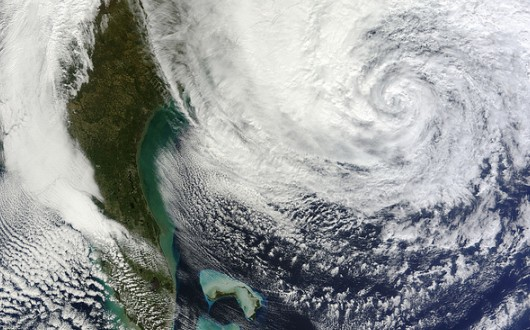GISS use a 1200 km radius for the temperatures measured from land
temperature stations. The 1200 km radius is also applied to the coastal
land/city/Airport temperature stations thus "covering" up to 1200 km
over the oceans. GISS for example "covers" the Arctic ocean from land
stations.
Fig1
From DMI
we learn, that Arctic 80N-90N temperatures in the melt season this year
is colder than average. This was the case last year too, while earlier
years in the DMI analysis period (1958-2010) hardly ever shows Arctic
melt season temperatures this cold.
This is how DMI temperature averages for Arctic 80N-90N melt season appears when plotted to allow compare over time:
Fig2 (When i speak of "the melt season" i refer to the period where
temperatures 80N-90N are above zero Celsius. The green line above is the
DMI temperature average, a little over 0,9 Celsius)
It seems that average Arctic temperatures 80N – 90N in melt season of
the years 2004, 2009 and 2010 are araound 0,4-0,5K whereas the
temperatures in 1991 and 1993 where around 1,3 K. In general DMI´s data
(if correct) reveals a cooling from the mid 1990´ies till today.
The 80N-90N area of the Arctic is practically always ice
covered. Therefore, the 80N-90N is perhaps not so affected by heat from
the other areas of the Arctic that has been still more ice free in the
period 1995-2007. Im not sure why DMI shows such a cooling trend for the
80N-90N area, but it could appear as if the ice covered areas of the
Arctic has its own history of temperatures? And how should GISS data
from distant land stations account for this?
Here´s how GISS temperature appears when comparing 1991 to 2009 for the Arctic Polar region:
Fig3
The Arctic melt season is mostly June and July. For both months the GISS
Arctic temperature trend 1991 vs 2009 shows warming around 0,3-0,7K
which is in contrast with the DMI trends of cooling of around 0,7K for
the region.
Is it basically a convincing idea to use land/city/Airport temperatures for temperatures at sea? Give it a thought:
Imagine you stand on a boat 12 km from land…
Fig4
You want to know the Air temperature in 2 meters altitude. Which
temperature would be most precise, the water temperature around the boat
or the temperature from land ( measured at the city airport… ) ?
Now imagine the same situation, but this time you are 1150 km from land.
Which temperature would you rely most on, the water temperature around
the boat or the temperature from land (city/Airport) 1150 km away?
Since 1987, James Hasen, and thus GISS, har used a 1200 km radius in
their global temperatures based on meteorological stations and thus
extended land temperatures to cover a considerable ocean area.
Below a compare of SST with the temperatures GISS use for ocean areas.
Fig5
1) Left: GISS land temperatures including land temperatures to cover ocean areas.
2) Right: As 1) but now for the ocean areas the actual SST measured by the Hadley centre are shown.
Both pictures are from june 2010. From this illustration we see, that
ocean areas represented by SST are poorly reflected by GISS land
temperature data and the idea of expanding land temperatures to cover
ocean area appears challenged?
Fig6
Above I have shown first the ocean areas GISS included in their global
temperature data from meteorological stations and then the corresponding
SST from hadley. Again, this is June 2010 data, and its from http://data.giss.nasa.gov/gistemp/graphs/
(In addition to land data, GISS use a few airtemperature inputs from ships in fixed position).
In the compare above, a few areas (between Sri Lanka and Singapore and
around Spitsbergen and slightly more) has GISS ocean temperatures warmer
than Hadley SST, but more often the GISS temperatures for oceans are
warmer than the Hadley SST. In general, differences are numerous and
significant, SST does not support GISS “ocean” data obtained by
expanding land area temperatures to cover for ocean areas.
One cant help wonder why not MAT (Marine Air Temperatures) are not used widely in stead of both SST and GISS land temperatures?
Last changed: 6th August, 2010 at 00:42:40


'Colder Arctic temperatures in the melt season vs. GISS temperatures.' has no comments
Be the first to comment this post!